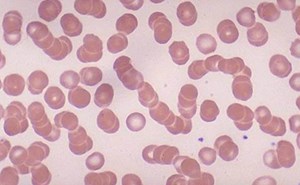
Key Aspects in the Management of TBI in the ED to Minimize Secondary Injury
Dr. Miyant'e Newton, MD
Traumatic brain injury (TBI) is defined by the Centers for Disease Control and Prevention as a disruption in the normal function of the brain that can be caused by a bump, blow, jolt to the head, or penetrating brain injury.1 Classification of TBI, among other patient specific factors, is stratified by the Glasgow Coma Scale (GCS), with mild being an initial GCS of 13-15, moderate from 9-12, and severe as any GCS less than or equal to 8.2 TBI is commonly seen in the emergency department (ED), accounting for approximately 2 million ED visits annually.3 Approximately 250,000 of these patients require hospitalization and approximately 50,000 die.3 In addition, TBI represents a significant financial burden, with 3 billion dollars spent on initial hospitalization alone.3
Injury to the brain in TBI is separated into two categories: primary injury related to the initial trauma to the brain, such as from a motor vehicle collision, and secondary injury related to damage ensuing after the initial injury. Primary injury often leads to brain contusions, intracranial hematoma formation, and shearing of cerebral white matter tracts, which lead to irreversible damage to the brain. Secondary injury can be a result of numerous factors such as hypoxia, hypotension, or seizures. In addition to the initial diagnosis and recognition of TBI, management focusing on the prevention of secondary brain injury should be of paramount importance to Emergency Physicians.
The general principle of managing patients with TBI is the maintenance of physiologic homeostasis. As cerebral autoregulation is lost in patients with TBI, avoiding both hypotension, which leads to inadequate perfusion and ischemia, and hypertension, which promotes vasogenic edema and increased intracranial pressure (ICP), is critical. The Brain Trauma Foundation (BTF) guidelines recommend maintaining a systolic blood pressure (SBP) over 100 for patients ages 50-59 and over 110 for adults outside this age range.4 Hypoxia should be avoided given the resulting decrease in oxygen delivery, as should hyperoxia, which leads to cellular injury from free oxygen radicals.5 Similarly, given the effect of carbon dioxide on cerebral blood flow, normocarbia should be maintained.4 Hyperventilation leading to hypocarbia is a common technique used in situations of impending herniation to promote cerebral vasoconstriction. While hypocarbia may lead to a decrease in ICP due to vasoconstriction, prolonged hyperventilation-induced cerebral vasoconstriction leads to inadequate oxygen delivery to the brain promoting further brain injury. Ideally, hyperventilation should be avoided in the first 24 hours after the initial injury but if necessary to prevent herniation, should be limited to no more than 2 hours.4 Despite robust literature on hypothermia in cardiac arrest, recommendations on temperature management in TBI are limited. BTF currently recommends against prophylactic therapeutic hypothermia.4 Seizure prophylaxis is recommended in TBI to prevent early posttraumatic seizures.4 Levetiracetam is commonly used given its safety profile among other therapies available.6
In patients with TBI where intubation is required, several considerations should be taken to avoid potentially harmful physiological effects of intubation. Medications used in rapid sequence intubation (RSI) can cause a variety of hemodynamic effects, including hypotension and hypertension, that should be considered when choosing RSI agents. In addition, stimulation of the upper airway during intubation results in catecholamine release, increasing blood pressure and ICP. “Pretreating” anticipated elevations of ICP with a bolus of intravenous lidocaine or fentanyl prior to intubation can blunt this sympathetic response and minimize ICP elevation.7 Although no societal guidelines have clear recommendations on the use of “pretreatment” for patients with TBI, many experts no longer recommend lidocaine as a pretreatment agent given the poor evidence and risk of adverse effects. Instead, fentanyl can be used at 3 mcg/kg prior to intubation.7
ED patients presenting with TBI often have a history of anticoagulation or antiplatelet use. Commonly used anticoagulant agents include Vitamin K antagonists, such as warfarin, and direct oral anticoagulants (DOACs) including apixaban or rivaroxaban. TBI patients on anticoagulation with evidence of hemorrhage on CT imaging should be considered for reversal. Warfarin can be reversed with Vitamin K at 10 International Units (IU) IV. It is important to note that reversal with Vitamin K can take up to six hours to take effect. Therefore, if available, four-factor prothrombin complex concentrate (PCC) can be given based on INR or at fixed dosing based on weight if INR is not yet known.8 If PCC is unavailable or there is an allergy to heparin (heparin is often added to PCC preparations to limit activation during the manufacturing process), fresh frozen plasma (FFP) can be administered at 2 - 4 units and re-dosed based on trending INR.8 DOACs should be reversed with PCC at 50 IU/kg.8 While guidelines for reversing anticoagulants are clear, therapies targeting antiplatelet agents remain controversial. Currently, the Society of Critical Care Medicine and the Neurocritical Care Society recommend patients with intracranial bleeding related to antiplatelet agents be given desmopressin at 0.4 mcg/kg IV, although the evidence for this intervention is not robust.8 Platelet transfusion should be discussed with neurosurgery prior to administration. Ideally, patients going to the operating theater for decompression will have platelet function testing completed in the ED.8
While patients are managed in the ED, it is essential to have close monitoring to evaluate for signs of elevated ICP and impending herniation. Clinical findings of herniation include posturing, asymmetric pupils, unreactive pupils, or the Cushing Reflex of hypertension, bradycardia, and irregular respirations.9 If there is concern for elevated ICP, there are many interventions to lower ICP that can be provided in the ED. These interventions are typically executed in a tiered approach such as described by the Seattle International Severe Traumatic Brain Injury Consensus Conference.10 Notably, hyperosmolar therapy with either mannitol or hypertonic saline work through multiple mechanisms to lower ICP. Both agents cause fluid to shift out from the brain, thereby reducing edema. These agents also promote intravascular volume expansion, increasing cerebral perfusion.4 While evidence suggests neither therapy is superior to the other in ICP reduction, hypertonic saline tends to be favored in the ED due to the osmotic diuresis associated with mannitol.10 Mannitol can be provided at 0.5-1.5 g/kg. Hypertonic saline can be given in various concentrations from 250 mL of 3% to 30 mL of 23.4%.11 Although central access is preferred, in emergency settings hypertonic saline, even at 23.4%, has been proven to be safe in peripheral administration in bolus doses.12 When all other medical interventions fail, surgical decompression can be considered. Trials evaluating early decompressive therapy in patients with TBI with persistent ICP elevation despite maximum medical therapy show mortality benefit but with worse functional outcomes.13 Ultimately the decision for decompressive craniotomy will be at the discretion of neurosurgical specialists if deemed to be of benefit for the patient.
In summary, TBI is a common ED presentation and is associated with significant morbidity and mortality. Initial resuscitation and management in the ED is important to minimize downstream secondary injury and consequences of cytotoxic edema. First, physiologic parameters should be optimized, with attention given to blood pressure, oxygenation, and ventilation. For patients requiring airway protection, intubation should be thoroughly planned prior to RSI to avoid drastic hemodynamic changes worsening brain injury. Coagulopathy should be reversed as indicated. Finally, ED patients should have close monitoring for signs and symptoms of elevated ICP and herniation with appropriate interventions including hyperosmolar therapy if needed. Once medical therapy has been optimized and ICP continues to be inadequately managed, the appropriateness of surgical decompression should be discussed with Neurosurgery.
References
- CDC (Centers for Disease Control and Prevention). Traumatic brain injury & concussion. 2017
- Robinson CP. Moderate and Severe Traumatic Brain Injury. Continuum (Minneap Minn). 2021 Oct 1;27(5):1278-1300. doi: 10.1212/CON.0000000000001036. PMID: 34618760.
- McGarry, L. J. , Thompson, D. , Millham, F. H. , Cowell, L. , Snyder, P. J. , Lenderking, W. R. & Weinstein, M. C. (2002). Outcomes and Costs of Acute Treatment of Traumatic Brain Injury. The Journal of Trauma: Injury, Infection, and Critical Care, 53 (6), 1152-1159.
- Carney N, Totten AM, O'Reilly C, Ullman JS, Hawryluk GW, Bell MJ, Bratton SL, Chesnut R, Harris OA, Kissoon N, Rubiano AM, Shutter L, Tasker RC, Vavilala MS, Wilberger J, Wright DW, Ghajar J. Guidelines for the Management of Severe Traumatic Brain Injury, Fourth Edition. Neurosurgery. 2017 Jan 1;80(1):6-15. doi: 10.1227/NEU.0000000000001432. PMID: 27654000.
- Brenner M, Stein D, Hu P, Kufera J, Wooford M, Scalea T. Association Between Early Hyperoxia and Worse Outcomes After Traumatic Brain Injury. Arch Surg. 2012;147(11):1042–1046. doi:10.1001/archsurg.2012.1560
- Chamberlain JM, Kapur J, Shinnar S, Elm J, Holsti M, Babcock L, Rogers A, Barsan W, Cloyd J, Lowenstein D, Bleck TP, Conwit R, Meinzer C, Cock H, Fountain NB, Underwood E, Connor JT, Silbergleit R; Neurological Emergencies Treatment Trials; Pediatric Emergency Care Applied Research Network investigators. Efficacy of levetiracetam, fosphenytoin, and valproate for established status epilepticus by age group (ESETT): a double-blind, responsive-adaptive, randomised controlled trial. Lancet. 2020 Apr 11;395(10231):1217-1224. doi: 10.1016/S0140-6736(20)30611-5. Epub 2020 Mar 20. Erratum in: Lancet. 2023 May 6;401(10387):1498. PMID: 32203691; PMCID: PMC7241415.
- Kramer N, Lebowitz D, Walsh M, Ganti L. Rapid Sequence Intubation in Traumatic Brain-injured Adults. Cureus. 2018 Apr 25;10(4):e2530. doi: 10.7759/cureus.2530. PMID: 29946498; PMCID: PMC6017125.
- Frontera JA, Lewin JJ 3rd, Rabinstein AA, et al. Guideline for reversal of antithrombotics in intracranial hemorrhage: a statement for healthcare professionals from the Neurocritical Care Society and Society of Critical CareMedicine.Neurocrit Care.2016;24:6–46.
- Tadevosyan A, Kornbluth J. Brain Herniation and Intracranial Hypertension. Neurol Clin. 2021 May;39(2):293-318. doi: 10.1016/j.ncl.2021.02.005. Epub 2021 Mar 31. PMID: 33896520.
- Shi J, Tan L, Ye J, Hu L. Hypertonic saline and mannitol in patients with traumatic brain injury: A systematic and meta-analysis. Medicine (Baltimore). 2020 Aug 28;99(35):e21655. doi: 10.1097/MD.0000000000021655. PMID: 32871879; PMCID: PMC7458171.
- Oh S, Delic JJ. Hyperosmolar Therapy in the Management of Intracranial Hypertension. AACN Adv Crit Care. 2022 Mar 15;33(1):5-10. doi: 10.4037/aacnacc2022743. PMID: 35259219.
- Faiver L, Hensler D, Rush SC, Kashlan O, Williamson CA, Rajajee V. Safety and Efficacy of 23.4% Sodium Chloride Administered via Peripheral Venous Access for the Treatment of Cerebral Herniation and Intracranial Pressure Elevation. Neurocrit Care. 2021 Dec;35(3):845-852. doi: 10.1007/s12028-021-01248-7. Epub 2021 Jun 25. PMID: 34173156.
- Hutchinson PJ, Kolias AG, Timofeev IS, Corteen EA, Czosnyka M, Timothy J, Anderson I, Bulters DO, Belli A, Eynon CA, Wadley J, Mendelow AD, Mitchell PM, Wilson MH, Critchley G, Sahuquillo J, Unterberg A, Servadei F, Teasdale GM, Pickard JD, Menon DK, Murray GD, Kirkpatrick PJ; RESCUEicp Trial Collaborators. Trial of Decompressive Craniectomy for Traumatic Intracranial Hypertension. N Engl J Med. 2016 Sep 22;375(12):1119-30. doi: 10.1056/NEJMoa1605215. Epub 2016 Sep 7. PMID: 27602507.



